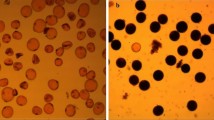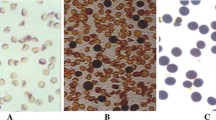Abstract
Previous research has demonstrated that the thermo-sensitive genic male-sterile (TGMS) gene in rice was regulated by temperature. TGMS rice is important to hybrid rice production because the application of the TGMS system in two-line breeding is cost-effective, simple, efficient and overcomes the limitations of the cytoplasmic male sterility (CMS) system. AnnongS is the first discovered and deeply studied TGMS rice line in China. Previous studies have suggested that AnnongS-1 and Y58S, two derivative TGMS lines of AnnongS, were both controlled by a single recessive gene named tms5, which was genetically mapped on chromosome 2. In the current study, three populations (AnnongS-1 × Nanjing11, Y58S × Q611, and Y58S × Guanghui122) were developed to investigate the tms5 gene molecular map. Analysis of recombination events of sterile samples, utilizing 125 probes covering the tms5 region, suggested that the tms5 gene was physically mapped to a 19 kb DNA fragment between two markers, 4039-1 and 4039-2, located on the BAC clone AP004039. Following the construction of a physical map between the two markers, ONAC023, a member of the NAC (NAM-ATAF-CUC-related) gene family, was identified as the candidate of the tms5 gene.







Similar content being viewed by others
Abbreviations
- TGMS:
-
Thermo-sensitive genic male-sterile
- CMS:
-
Cytoplasmic male sterility
- NAC:
-
NAM-ATAF-CUC-related
References
Aida M, Ishida T, Fukaki H, Fujisawa H, Tasaka M (1997) Genes involved in organ separation in Arabidopsis: an analysis of the cup-shaped cotyledon mutant. Plant Cell 9:841–857
Aida M, Vernoux T, Furutani M, Traas J, Tasaka M (2002) Roles of PIN-FORMED1 and MONOPTEROS in pattern formation of the apical region of the Arabidopsis embryo. Development 129:3965–3974
Deng HF, Li BH, Liu AM, Zhou QM (1996) The primary research of Annong810S. Crop Res 10:8–11
Deng HF, Shu FB, Yuan DY (1999) The research of AnnongS-1. Hybrid Rice 14:1–4
Dong NV, Subudhi PK, Luong PN, Quang VD, Quy TD, Zheng HG, Wang B, Nguyen HT (2000) Molecular mapping of a rice gene conditioning thermosensitive genic male sterility using AFLP, RFLP and SSR techniques. Theor Appl Genet 100:727–734
He ZH, Sheng ZD (1991) Genetic analysis and improvement of stem clasping length of the male sterile rice line. Chin J Rice Sci 5:1–6
Ishida T, Aida M, Takada S, Tasaka M (2000) Involvement of CUP-SHAPED COTYLEDON genes in gynoecium and ovule development in Arabidopsis thaliana. Plant Cell Physiol 41:60–67
Jia JH, Li CY, Qu XP, Wang Q, Deng QY, Weng ML, Yuan LP, Wang B (2000) Constructing a genetic linkage map and mapping a new thermo-sensitive genic male-sterile gene (tms5) in rice. In: Li JY (ed) 1st National Plant Genome Meeting, Liaoning Normal University Publishing, Dalian, China, p 37
Jia JH, Zhang DS, Li CY, Qu XP, Wang SW, Chamarerk V, Nguyen HT, Wang B (2001) Molecular mapping of the reverse thermo-sensitive genic male-sterile gene (rtms1) in rice. Theor Appl Genet 103:607–612
Kinoshita (1992) Report of the committee on gene symbolization nomenclature and linkage groups. Rice Genet Newslett 9:2–4
Koh HJ, Son YH, Heu MH, Lee HS, McCouch SR (1999) Molecular mapping of a new genic male-sterility gene causing chalky endosperm in rice (Oryza sativa L.). Euphytica 106:57–62
Kurata N, Miyoshi K, Nonomura K, Yamazaki Y, Ito Y (2005) Rice mutants and genes related to organ development, morphogenesis and physiological traits. Plant Cell Physiol 46:48–62
Kusano H, Asano T, Shimada H, Kadowaki K (2005) Molecular characterization of ONAC300, a novel NAC gene specifically expressed at early stages in various developing tissues of rice. Mol Genet Genomics 272:616–626
Lander ES, Green P, Abrahamson J, Barlow A, Daly MJ, Lincoln SE, Newburg L (1987) MAPMAKER: an interactive computer package for constructing primary genetic linkage maps of experimental and natural populations. Genomics 1:174–181
Lee DS, Chen LJ, Suh HS (2005) Genetic characterization and fine mapping of a novel thermo-sensitive genic male-sterile gene tms6 in rice (Oryza sativa L.). Theor Appl Genet 111:1271–1277
Li J, Liang CY, Yang JL, Xing QH, Yang DE, Deng QY, Weng ML, Wang B (2003) Clong of the APRT gene from rice and analysis of its association with TGMS. Acta Bot Sin 45:1319–1328
Liang CY, Li J, Shu J, Deng QY, Guo BT, Wang B (2004) Fertility alteration of male sterile rice line annong S-1 and the expression of fertility related APRT gene. Yi Chuan Xue Bao 31:513–517
Lincoln S, Daly M, Lander E (1992) Constructing genetic maps with MAPMAKER/EXP 3.0. Whitehead Institute Technical Report, 3rd edn, Whitehead Institute, Cambridge
Liu YG, Whittier RF (1995) Thermal asymmetric interlaced PCR: automatable amplification and sequencing of insert end fragments from P1 and YAC clones for chromosome walking. Genomics 25:674–681
Liu YG, Mitsukawa N, Oosumi T, Whittier RF (1995) Efficient isolation and mapping of Arabidopsis thaliana T-DNA insert junctions by thermal asymmetric interlaced PCR. Plant J 8:457–463
Liu YG, Liu H, Chen L, Qiu W, Zhang Q, Wu H, Yang C, Su J, Wang Z, Tian D, Mei M (2002) Development of new transformation-competent artificial chromosome vectors and rice genomic libraries for efficient gene cloning. Gene 282:247–255
Murray MG, Thompson WF (1980) Rapid isolation of high molecular weight plant DNA. Nucleic Acids Res 8:4321–4325
Ooka H, Satoh K, Doi K, Nagata T, Otomo Y, Murakami K, Matsubara K, Osato N, Kawai J, Carninci P, Hayashizaki Y, Suzuki K, Kojima K, Takahara Y, Yamamoto K, Kikuchi S (2003) Comprehensive analysis of NAC family genes in Oryza sativa and Arabidopsis thaliana. DNA Res 10:239–247
Sablowski RW, Meyerowitz EM (1998) A homolog of NO APICAL MERISTEM is an immediate target of the floral homeotic genes APETALA3/PISTILLATA. Cell 92:93–103
Souer E, van Houwelingen A, Kloos D, Mol J, Koes R (1996) The no apical meristem gene of Petunia is required for pattern formation in embryos and flowers and is expressed at meristem and primordia boundaries. Cell 85:159–170
Subudhi PK, Borkakati RK, Virmani SS, Huang N (1997) Molecular mapping of a thermosensitive genetic male-sterility gene in rice using bulked segregant analysis. Genome 40:188–194
Takada S, Hibara K, Ishida T, Tasaka M (2001) The CUP-SHAPED COTYLEDON1 gene of Arabidopsis regulates shoot apical meristem formation. Development 128:1127–1135
Vroemen CW, Mordhorst AP, Albrecht C, Kwaaitaal MA, de Vries SC (2003) The CUP-SHAPED COTYLEDON3 gene is required for boundary and shoot meristem formation in Arabidopsis. Plant Cell 15:1563–1577
Wang B, Xu WW, Wang JZ, Wu W, Zheng HG, Yang ZY, Ray JD, Nguyen HT (1995) Tagging and mapping the thermosensitive genic male-sterile gene in rice (Oryza sativa) with molecular markers. Theor Appl Genet 91:1111–1114
Wang YG, Xing QH, Deng QY, Liang FS, Yuan LP, Weng ML, Wang B (2003) Fine mapping of the rice thermo-sensitive genic male-sterile gene tms5. Theor Appl Genet 107:917–921
Weir I, Lu J, Cook H, Causier B, Schwarz-Sommer Z, Davies B (2004) CUPULIFORMIS establishes lateral organ boundaries in Antirrhinum. Development 131:915–922
Xiang Y, Li BH, Wu HX, Chen LB (2002) The allelic analyses of thermo-sensitive and photo-sensitive male sterile genes in rice. Seed 124:37–39
Xie Q, Frugis G, Colgan D, Chua NH (2000) Arabidopsis NAC1 transduces auxin signal downstream of TIR1 to promote lateral root development. Genes Dev 14:3024–3036
Xu SB, Tao YF, Yang ZQ, Chu JY (2002) A simple and rapid methods used for silver staining and gel preservation. Yi Chuan 24:335–336
Yamaguchi Y, Ikeda R, Hirasawa H, Minami M, Ujihara A (1997) Linkage analysis of the thermo-sensitive genic male sterility gene tms2 in rice (Oryza sativa L.). Breed Sci 47:371–373
Yang RC, Wang NY (1988) 5460S indica photosensitive genic male-sterile rice. Int Rice Res Newslett 13:6–7
Yang RC, Liang KJ, Wang NY, Chen SH (1992) A recessive gene in indica rice 5460 s for thermosensitive genic male sterility. Rice Genet Newslett 9:56–67
Yu J, Hu S, Wang J, Wong GK, Li S, Liu B, Deng Y, Dai L, Zhou Y, Zhang X, Cao M, Liu J, Sun J, Tang J, Chen Y, Huang X, Lin W, Ye C, Tong W, Cong L, Geng J, Han Y, Li L, Li W, Hu G, Li J, Liu Z, Qi Q, Li T, Wang X, Lu H, Wu T, Zhu M, Ni P, Han H, Dong W, Ren X, Feng X, Cui P, Li X, Wang H, Xu X, Zhai W, Xu Z, Zhang J, He S, Xu J, Zhang K, Zheng X, Dong J, Zeng W, Tao L, Ye J, Tan J, Chen X, He J, Liu D, Tian W, Tian C, Xia H, Bao Q, Li G, Gao H, Cao T, Zhao W, Li P, Chen W, Zhang Y, Hu J, Liu S, Yang J, Zhang G, Xiong Y, Li Z, Mao L, Zhou C, Zhu Z, Chen R, Hao B, Zheng W, Chen S, Guo W, Tao M, Zhu L, Yuan L, Yang H (2002) A draft sequence of the rice genome (Oryza sativa L. ssp. indica). Science 296:79–92
Yu J, Wang J, Lin W, Li S, Li H, Zhou J, Ni P, Dong W, Hu S, Zeng C, Zhang J, Zhang Y, Li R, Xu Z, Li X, Zheng H, Cong L, Lin L, Yin J, Geng J, Li G, Shi J, Liu J, Lv H, Li J, Deng Y, Ran L, Shi X, Wang X, Wu Q, Li C, Ren X, Li D, Liu D, Zhang X, Ji Z, Zhao W, Sun Y, Zhang Z, Bao J, Han Y, Dong L, Ji J, Chen P, Wu S, Xiao Y, Bu D, Tan J, Yang L, Ye C, Xu J, Zhou Y, Yu Y, Zhang B, Zhuang S, Wei H, Liu B, Lei M, Yu H, Li Y, Xu H, Wei S, He X, Fang L, Huang X, Su Z, Tong W, Tong Z, Ye J, Wang L, Lei T, Chen C, Chen H, Huang H, Zhang F, Li N, Zhao C, Huang Y, Li L, Xi Y, Qi Q, Li W, Hu W, Tian X, Jiao Y, Liang X, Jin J, Gao L, Zheng W, Hao B, Liu S, Wang W, Yuan L, Cao M, McDermott J, Samudrala R, Wong GK, Yang H (2005) The genomes of Oryza sativa: a history of duplications. PLoS Biol 3:e38
Zheng JT, Hu WX, Xie HA, luo JM, Huang XB (1998) The study of the relationship between pollen fertility and stem clasping length of 16 therom-sensitive genic male sterile indica rice lines. J Zhejiang Agric Univ 24:627–630
Acknowledgements
This work was supported by grants from the State Key Basic Research and Development Plan of China (Grant No. 2001CB108802) and the Hi-Tech and Development Program of China (No. 2002AA2Z1001).
Author information
Authors and Affiliations
Corresponding author
Rights and permissions
About this article
Cite this article
Yang, Q., Liang, C., Zhuang, W. et al. Characterization and identification of the candidate gene of rice thermo-sensitive genic male sterile gene tms5 by mapping. Planta 225, 321–330 (2007). https://doi.org/10.1007/s00425-006-0353-6
Received:
Accepted:
Published:
Issue Date:
DOI: https://doi.org/10.1007/s00425-006-0353-6




